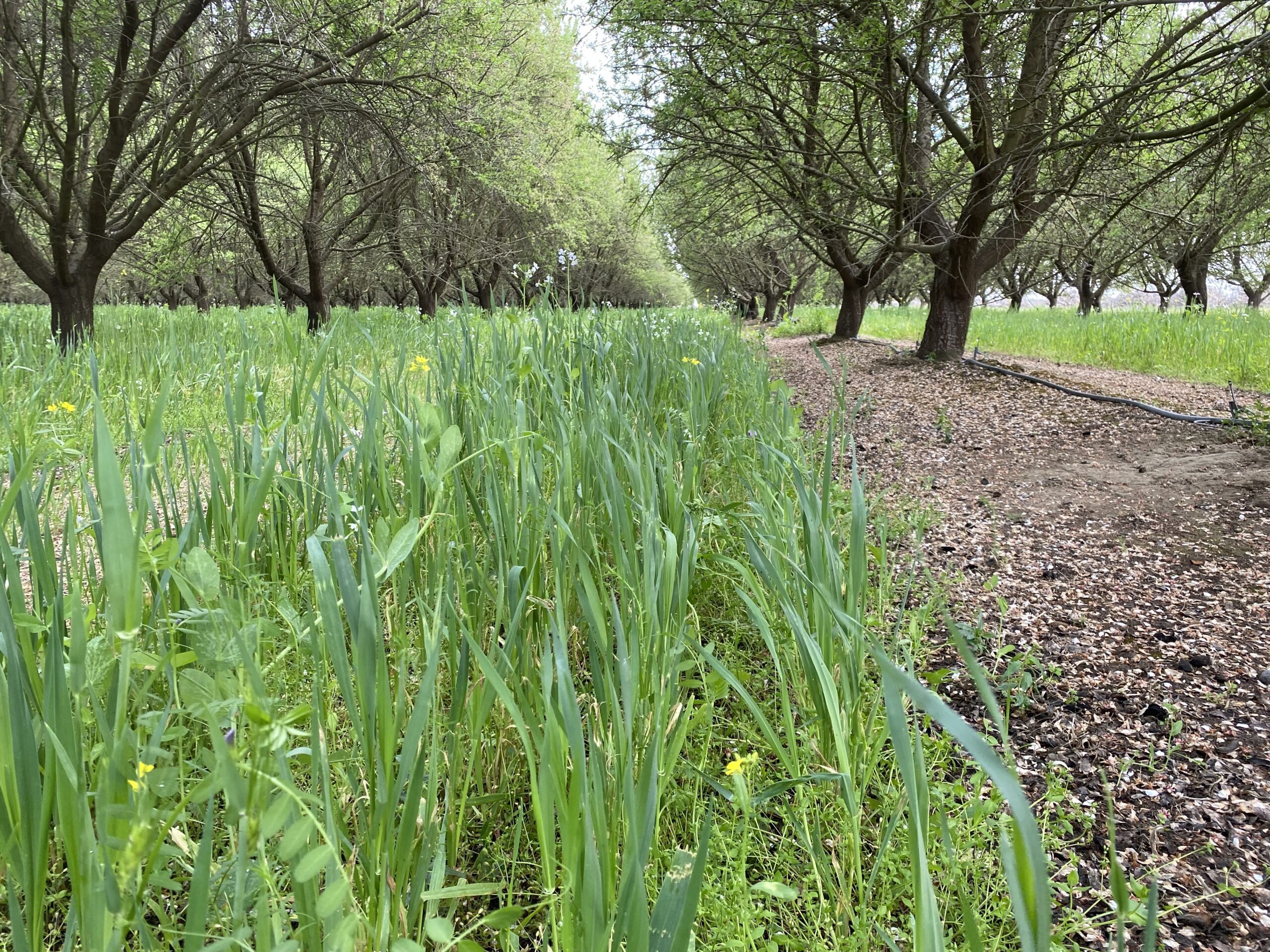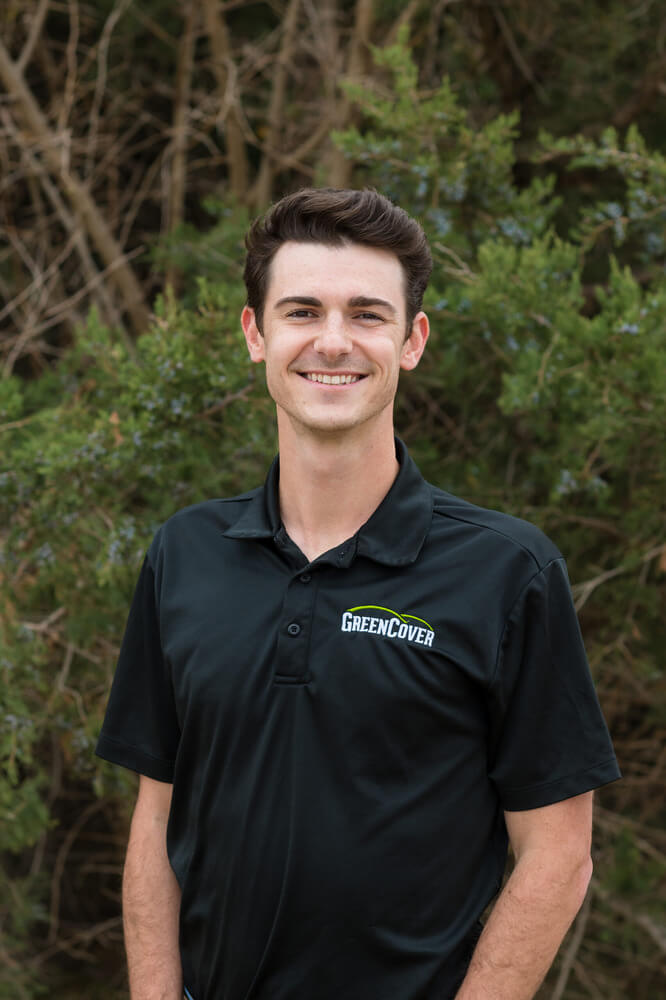
Low crop prices seem to be affecting almost all types of commodities, not only corn and soybeans, but even nut crops like almonds. With less income, there is less in the budget for various off season expenses and budget cuts are made. Unfortunately, one of the first things that might get cut is a cover crop.
One of the interesting things I heard recently was the comparison of gypsum and a cover crop. Both are used to alleviate compaction and increase water infiltration. Generally, one of the biggest problems for many orchard growers is compaction due to so many trips through the interrows for various in season applications, harvest, pruning, etc. As compaction increases, water infiltration decreases and we see pooling and washing even from minimal rains. To combat this, some may use gypsum to loosen the soil and some may use a cover crop. Let’s compare the two.
Gypsum works to loosen the soil through the introduction of calcium and the flocculation of clay particles. Since this is just another product being applied and not life being introduced, the orchard floor is still left bare. Compare this with a cover crop that has roots working below ground, boring through the soil to address compaction while also depositing root exudates which bind micro soil particles together to create macropores, thus creating more space for water and air within the soil. Above ground, we also see the cover crop growing and covering the ground with lush vegetation. This is important because a raindrop falls with a velocity of over 20 mph so even the very thing that is supposed to soften the ground can actually lead to further compaction. Furthermore, if a cover crop has shielded the soil and can take the force of each drop, the soil is protected and water can infiltrate at a steady pace.
In terms of cost, gypsum is generally applied at a rate of 1 to 2 tons per acre. Application costs are generally $60 to $120 per acre for the product plus spreading. Alternatively, most cover crop blends range from $30-50 per acre even after shipping costs. Using custom application rates, a cover crop can be drilled for about $25 per acre.
If it was purely a matter of cost and effectiveness, a cover crop would win, but the return on investment extends well beyond that. Life recruits life, as I like to say. Living plants lead to flourishing, well fed populations of soil microbes below ground and beneficial insects and pollinators above ground. This generally leads to enhanced life from other animal kingdoms such as birds that prey on rodent pests, keeping them in balance. Even after the cover crop is terminated from a late spring mowing and the heat and summer drought, the cover crop residue can be managed to protect the ground through much of the summer while still breaking down for a clean, and less dusty harvest than non-cover cropped orchards.
When it comes to budget cuts within a cropping system, make sure you are considering the long-term effects of the practices you choose to implement or omit. Cutting out a cover crop may save you a bit of money in the short term but there are far greater benefits to be had later down the line if you choose to make the investment into keeping your soils covered.
If you have an orchard, vineyard, or any type of perennial crop, Green Cover has the right cover crop seed for you. Reach out to your Green Cover seed provider to help design the right blend for you!
Thanks to Jerel Kratt of Regenerative Crop Consulting, Inc for contributions to this article.
